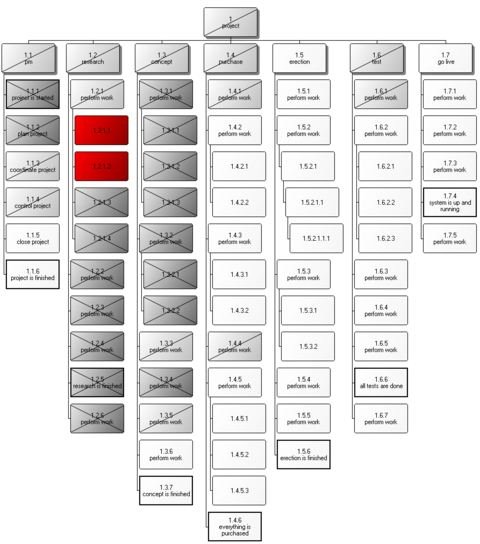Understanding the Work Breakdown Structure and Project Accounting
Work Breakdown Structure
The use of the work breakdown structure in project accounting is a technique that seeks to establish what the deliverables a project requires so that the project scope, costs, and schedules can be prepared at the start of the project. Using WBS, project components are decomposed into progressively smaller pieces until they are reduced into elemental tasks to which cost, risk, and other values can be assigned.
After breaking down every aspect of the project, the manageable pieces to which the project is resolved using the WBS technique are assigned to project resources in effort to facilitate accounting and planning. As these resources are allocated, project accounting will track the income and expenses of the project so that the project manager will know at every step whether or not the project is profitable.
Project accounting is facilitated through the WBS hierarchy because of the way it isolates every stage of work for its cost in human and material resources. Once the costs are determined, they can be assigned accounting codes for tracking purposes. By tying the WBS together with project accounting, the profitability of the project can be analyzed at every stage, so that adjustments in planning, activities, and resource allocation can be made when necessary.
Image Credit: Wikimedia Commons/SchoderDietmar
Project Accounting
The system by which financial details of a project are analyzed, recorded, and reported is called project accounting. Because project accounting is tasked with the validation of income and expense figures associated with a project, it relies on techniques such as the work breakdown structure to validate income and expenses at every level of the project. Validating the financial details of the project allows executives the ability to determine whether or not to grant approval for components of the project or even the project itself.
Analyzing the transactions at every level of the project is facilitated by WBS because of the need to determine appropriate allocations of debits and credits to relevant accounts. This type of transaction analysis is important so that government incentives, tax benefits, and economies of scale can be effectively leveraged in support of the project.
Because the WBS has defined every element of work within the project, an evaluation of burden cost can be completed. Specific rates can be added to the base invoice costs of the project based on the type of expense to accurately account for the loads placed upon specific labor and material resources.
Finally, WBS directly influences the billing process. Because every element of work needed to complete the project has been uncovered, documented, and analyzed, the project accounting system can produce invoices to clients that accurately reflect the expenses of the project.
The Bottom Line
The work breakdown structure with project accounting work to bring a favorable outcome to every project. An effective WBS will support project planning and project accounting so that the project can be completed in an effective and profitable manner.
References
NetMBA. “Work Breakdown Structure”, https://www.netmba.com/operations/project/wbs/
